In the 1920s, women's chiffon scarves emerged as essential fashion accessories, reflecting both elegance and individuality. You'd find them crafted from lightweight silk, ideal for layering over dresses or as headpieces. The vibrant colors and intricate designs, often embellished with sequins and embroidery, mirrored the carefree spirit of the flapper era. These scarves symbolized liberation and modern femininity, enhancing various outfits for formal events or casual outings. Their versatility allowed for endless styling options, from flowing drapes to chic knots. If you explore further, you'll uncover more about their significance and styling techniques during this transformative decade.
The Rise of Chiffon Scarves
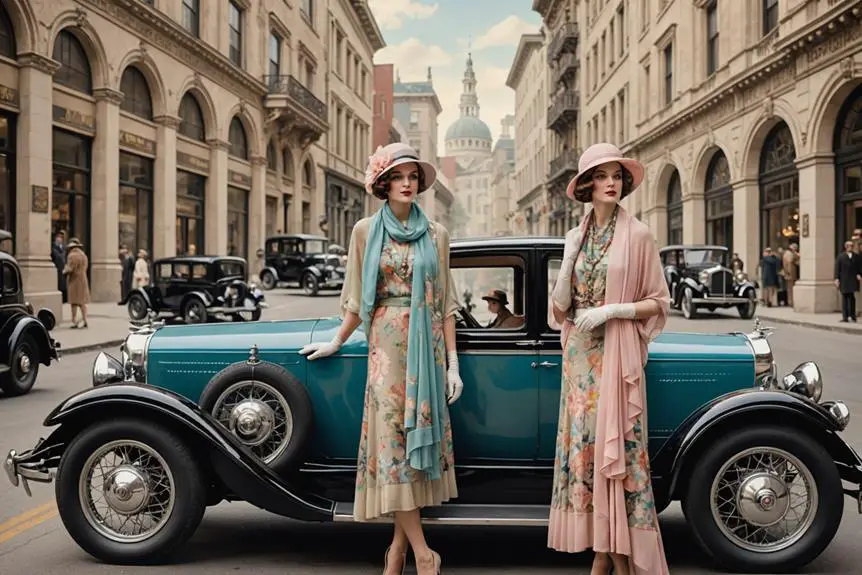
In the 1920s, chiffon scarves emerged as a defining accessory for fashion-forward women, enchanting them with their lightweight and airy texture. The evolution of textile manufacturing techniques made silk chiffon more accessible and affordable, allowing you to embrace this fashionable trend without breaking the bank. This versatility meant you could effortlessly layer a chiffon wrap shawl over your evening dress or casual outfits, adding a touch of elegance and flair to any ensemble. Vintage clothing labels from this era often highlighted the quality and craftsmanship of these scarves, making them highly sought after by collectors today, showcasing vintage clothing characteristics. The vibrant colors and bold patterns of chiffon scarves reflected the spirit of the Roaring Twenties, resonating with the Art Deco influences permeating the fashion scene. As you adorned yourself with these scarves, you embodied the flapper style's emphasis on freedom and movement. Whether worn as headscarves, neck wraps, or shoulder coverings, chiffon scarves became essential elements of your wardrobe.
Hollywood's rise during this era also played a pivotal role in popularizing chiffon scarves, as film stars showcased them as symbols of elegance and glamour. You couldn't help but be drawn to the allure of these scarves, which perfectly captured the essence of the dynamic and expressive fashion landscape of the time.
Popular Styles and Patterns
Chiffon scarves in the 1920s were not just accessories; they were statements of style and individuality. The lightweight, airy fabric draped elegantly around the neck or shoulders, transforming simple outfits into fashionable ensembles. Popular styles featured long, flowing designs that could be tied or layered, enhancing versatility and personal expression in your wardrobe. Many women sought vintage pieces that echoed the charm of earlier decades, as seen in identifying vintage clothing.
The patterns that adorned these scarves reflected the artistic movements of the time, with a strong influence from Art Deco. Common motifs included:
- Floral designs that added a touch of femininity
- Geometric shapes showcasing modernity
- Vibrant colors like jade, raspberry, and sapphire for boldness
- Intricate embroidery or beading, highlighting craftsmanship
- Layering techniques for a multi-dimensional look
These scarves not only complemented evening wear but also elevated daytime outfits, making them a staple for women seeking elegance. By embracing silk-like textures and vibrant patterns, you could easily make a statement, reminding everyone of the decade's spirit of liberation and creativity. The 1920s saw chiffon scarves as a canvas for artistic expression, allowing you to reflect your unique style while embracing the trends of the time.
Key Materials Used
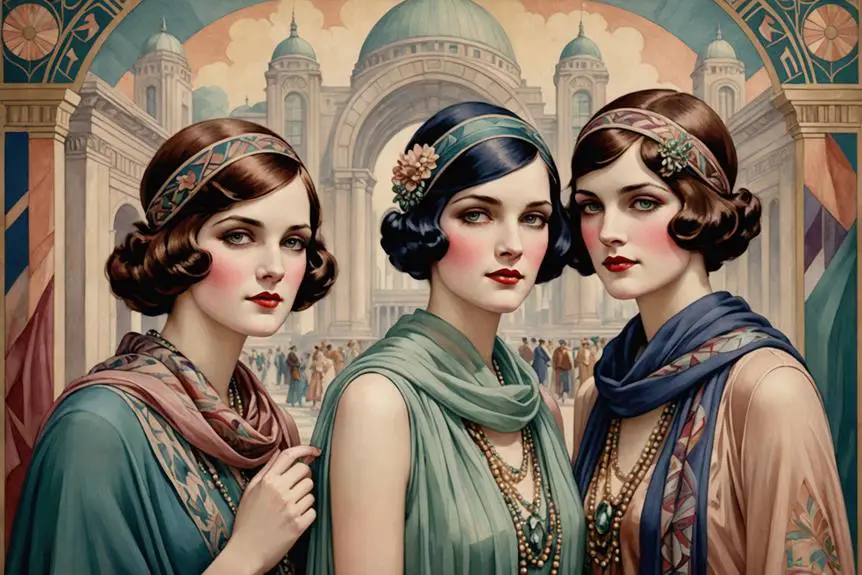
The key materials used in creating women's chiffon scarves during the 1920s played an essential role in defining their elegance and appeal. Primarily crafted from lightweight silk, these scarves offered a delicate and airy feel, making them perfect for evening wear and special occasions. The soft texture of silk allowed for intricate draping and layering, enhancing the overall gracefulness of women's fashion during the Art Deco era. Remarkably, the presence of vintage clothing labels on these scarves can provide insight into their provenance and authenticity, further adding to their allure.
Many chiffon scarves featured embellishments such as embroidery and beading, which not only added decorative flair but also aligned with the opulent styles of the decade. The vibrant color palette, ranging from pastel shades to bold hues, reflected the dynamic fashion trends of the time. This versatility made them an ideal accessory for various outfits, including the popular wrap scarf styles that complemented the flapper movement.
The inclusion of silk fringe further enhanced these scarves, providing a playful yet sophisticated touch. Overall, the choice of materials in chiffon scarves was paramount in creating the luxurious and fashionable look that defined women's attire in the 1920s, allowing you to express both elegance and modernity.
Influence of the Flapper Era
During the 1920s, the Flapper Era not only revolutionized women's fashion but also created a unique identity that embraced freedom and self-expression. The emergence of chiffon scarves played a notable role in this transformation. These lightweight accessories allowed women to showcase their individuality while enhancing their stylish looks. As a flapper, you'd likely drape a chiffon scarf over your shoulders or wrap it around your neck, adding flair to your outfit.
Consider the following aspects of chiffon scarves in this era:
- Versatile styling: Easily adapted to complement bobbed hairstyles and various outfits.
- Vibrant colors: Bold hues and patterns reflected the carefree spirit of the time.
- Comfort and movement: Lightweight chiffon supported active participation in energetic dance scenes.
- Evening wear staple: Essential for social gatherings, embodying the modern woman's identity.
- Fashion demand: The flapper culture notably increased the popularity of chiffon scarves.
As you embraced the essence of the Flapper Era, the chiffon shawl became an emblem of your newfound liberation and a symbol of the bold, modern woman.
Chiffon Scarves as Fashion Statements
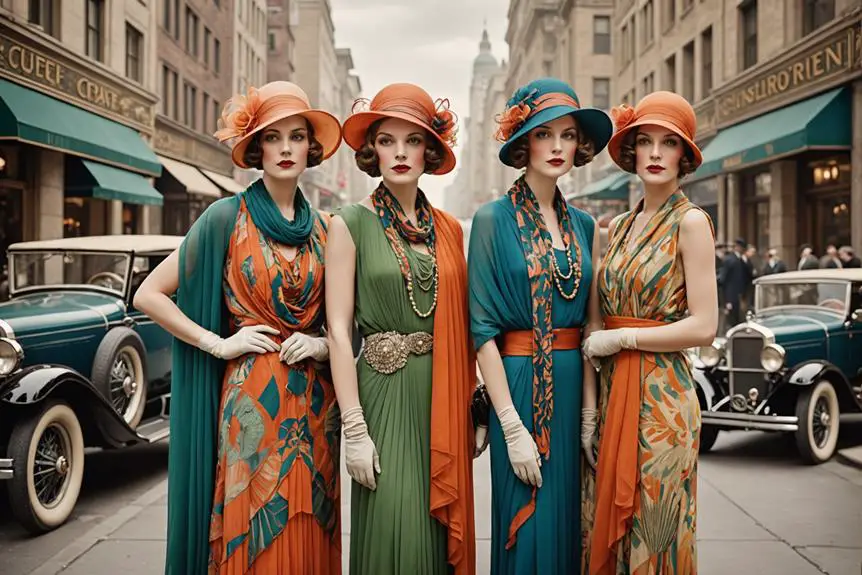
How did chiffon scarves become synonymous with the bold fashion statements of the 1920s? These delicate accessories transformed women's fashion, adding layers of elegance and luxury to outfits. You'd often see chiffon scarves draped around the neck or worn as chic headscarves, enhancing the glamorous aesthetic of the era. The sheer, lightweight fabric perfectly complemented evening dresses, creating a sense of movement and sophistication.
Chiffon scarves weren't just about looks; they embodied the spirit of the flapper culture, which celebrated freedom and individuality. As women adopted the loose-fitting, androgynous silhouettes of the time, these scarves provided a versatile accessory that allowed for personal expression. With intricate patterns, embroidered details, and vibrant colors influenced by the Art Deco movement, chiffon scarves became a canvas for creativity, reflecting the bold visuals of the period.
Moreover, their practicality added to their appeal. Whether you needed warmth in air-conditioned spaces or a stylish touch for an evening outing, chiffon scarves served multiple purposes. Ultimately, they became essential fashion statements, encapsulating the dynamic energy and transformative style of the 1920s.
Iconic Colors and Embellishments
Chiffon scarves in the 1920s were not only versatile fashion accessories but also vibrant expressions of style, characterized by their iconic colors and embellishments. The popularity of these scarves reflected the dynamic fashion trends of the Art Deco era. You'd notice how soft pastels, rich jewel tones, and striking black hues dominated the scene, allowing chiffon scarves to beautifully complement evening gowns and flapper dresses.
Embellishments played a significant role in enhancing their allure. Consider the following elements that defined these iconic accessories:
- Intricate embroidery that added texture and depth
- Sparkling sequins that caught the light and drew attention
- Delicate beading that created a touch of elegance
- Floral motifs and geometric designs, typical of the Art Deco aesthetic
- Versatile styling options, allowing for unique personal expression
The lightweight and sheer nature of chiffon allowed for flowing designs, making these scarves perfect for layering. Whether tied around the waist or wrapped as a headpiece, chiffon scarves became essential in showcasing individuality during a time of significant cultural change. Their vibrant colors and stunning embellishments truly made them stand out in 1920s fashion.
Occasions for Wearing Scarves
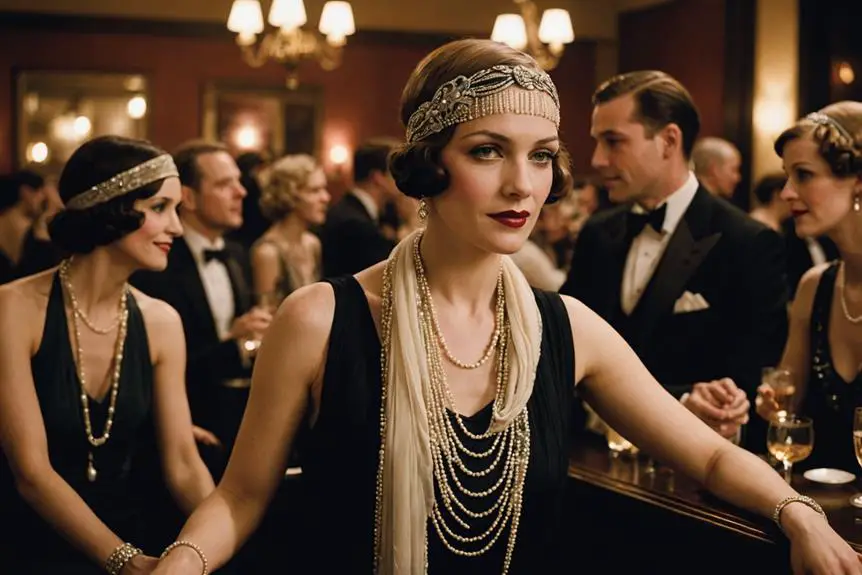
Scarves became a quintessential accessory for a variety of occasions in the 1920s, seamlessly blending style with function. You'd find women donning chiffon scarves at formal events like evening galas, dances, and weddings, where they added an elegant touch to evening gowns. These lightweight scarves often transformed into headscarves or wraps, providing warmth and style in air-conditioned venues or during cooler nights.
The intricate designs and embellishments of chiffon scarves made them perfect for themed parties, particularly those inspired by the glamor of the Great Gatsby era. Their versatility allowed you to wear them in multiple ways, enhancing your outfit whether you were attending a casual daytime gathering or a sophisticated evening affair.
Long silk options also played a role, gracefully draping over shoulders or cinching at the waist to create a refined silhouette. Meanwhile, fur shawls offered a luxurious alternative for colder settings, effortlessly complementing more formal attire. Gifting chiffon scarves became a cherished trend during this time, making them ideal presents for birthdays, holidays, and special occasions, ensuring that these accessories remained a beloved staple in every stylish woman's wardrobe.
Caring for Vintage Scarves
When caring for vintage scarves, it's vital to handle them with the utmost delicacy to preserve their beauty and integrity. These scarves, often adorned with intricate designs reminiscent of the 1920s vintage style, require specific attention to guarantee they maintain their charm. Here are some essential tips for proper care:
- Hand wash in cold water using a gentle detergent.
- Avoid wringing or twisting; lay flat on a clean towel to remove excess water.
- Store in a cool, dry place, preferably rolled or laid flat.
- Keep away from direct sunlight to prevent fading.
- For stubborn stains, consult a professional dry cleaner familiar with vintage textiles.
Market Trends in the 1920s
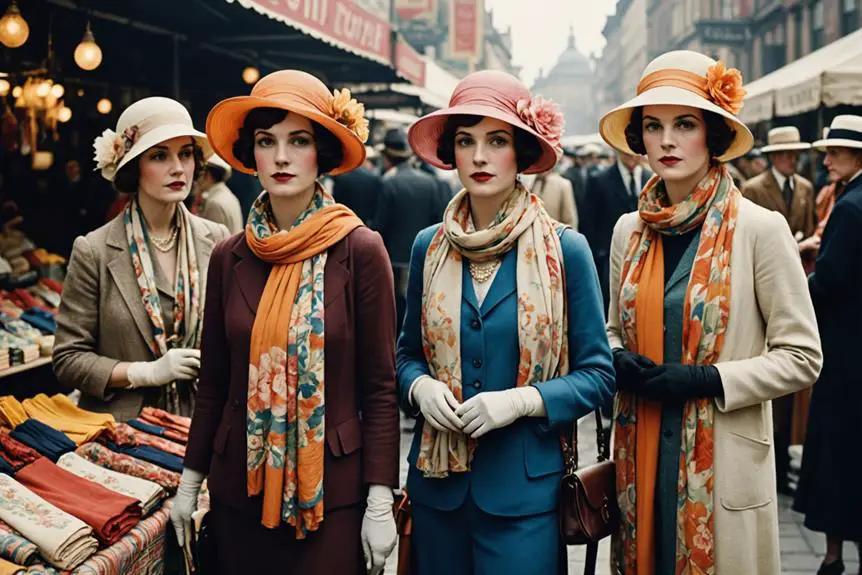
Throughout the 1920s, fashion trends underwent a dramatic transformation, with lightweight fabrics like chiffon rising to prominence in women's accessories. As you explore this vibrant era, you'll notice that chiffon scarves became essential for the modern woman, driven by the flapper culture and the Jazz Age's exuberance. These scarves weren't just practical; they were statement pieces, often adorned with intricate designs that aligned with the Art Deco aesthetic.
Here's a closer look at key trends in the chiffon scarf market of the 1920s:
| Trend | Description |
|---|---|
| Long Fringe | Scarves featured long fringe details, adding elegance and movement. |
| Shawl Wrap | Many women used chiffon scarves as stylish shawl wraps, draped gracefully over their shoulders. |
| Color Palette | Vibrant colors and playful designs mirrored the decade's spirit of liberation. |
These trends showcased how chiffon scarves complemented the new styles of dresses and haircuts, making them an indispensable part of women's fashion. The delicate texture and versatility of these accessories allowed women to express their individuality, reflecting the cultural shifts of the decade.
How to Style Chiffon Scarves
The allure of a woman's chiffon scarf lies in its remarkable versatility, allowing you to transform your outfit with ease. These delicate pieces elevate your style, particularly when paired with evening gowns, infusing both elegance and sophistication into your look. To master the art of styling chiffon scarves, consider these techniques:
- Drape it over your shoulders for an effortless wrap.
- Tie it at your waist to create an hourglass silhouette.
- Knot longer scarves elegantly for formal occasions, letting them flow gracefully.
- Wear it as a headscarf, channeling vintage glamour.
- Layer it over heavier fabrics like velvet for added warmth and texture.
In the 1920s, chiffon scarves were often styled with beaded or sequined dresses, enhancing the glamorous Art Deco aesthetic. The lightweight nature of chiffon allowed for creative expression, adapting to various fashion statements of the era. Whether flowing freely or knotted, these scarves not only complemented the silhouette of the wearer but also added a touch of warmth during cooler months. Embrace the versatility of chiffon scarves to make a enchanting fashion statement that pays homage to the elegance of the past.
Frequently Asked Questions
How Do You Wear 1920S Scarves?
To wear 1920s scarves, drape them elegantly over your shoulders or tie them loosely around your neck. Consider styling them as headbands or layering for added texture, embracing the era's flair and sophistication.
Did They Wear Fur Shawls in the 1920s?
Yes, they wore fur shawls in the 1920s to enhance elegance and warmth at formal events. These luxurious accessories often featured embellishments, complementing the glamorous silhouettes of flapper dresses and aligning with the Art Deco aesthetic.
How to Wear a Chiffon Scarf With a Dress?
To wear a chiffon scarf with a dress, drape it elegantly around your neck, wrap it like a shawl, or tie it in a loose knot. Experiment with styles to enhance your overall look effortlessly.
What Is the History of Women's Scarves?
Women's scarves have evolved considerably over centuries, originally serving practical functions. As fashion trends shifted, scarves transformed into stylish accessories, reflecting cultural changes and highlighting the interplay between utility and aesthetic appeal in women's wardrobes.
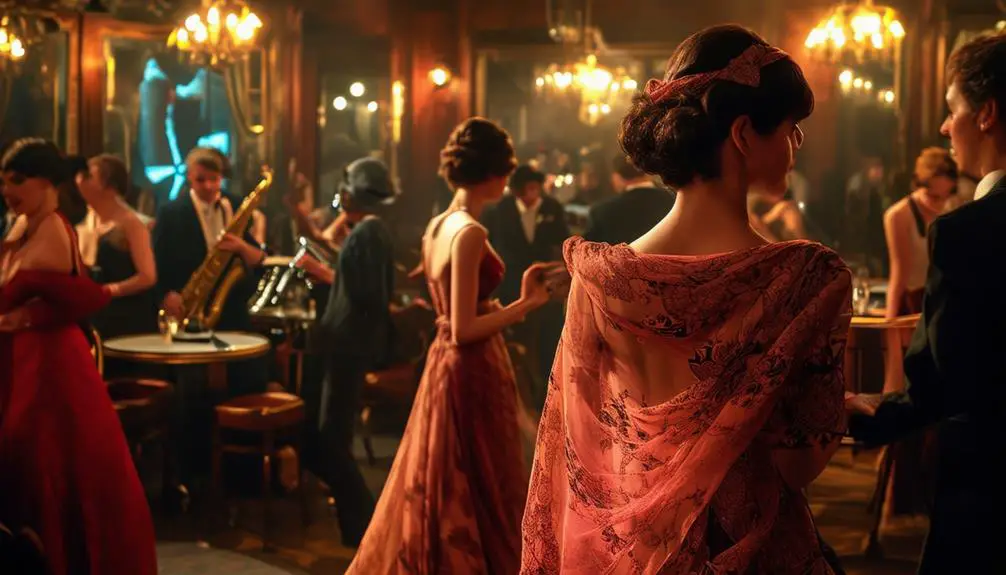

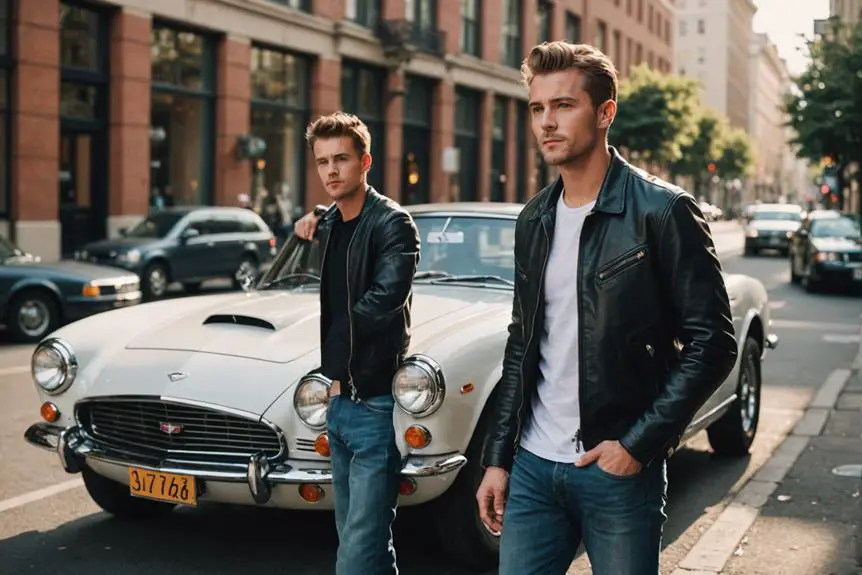
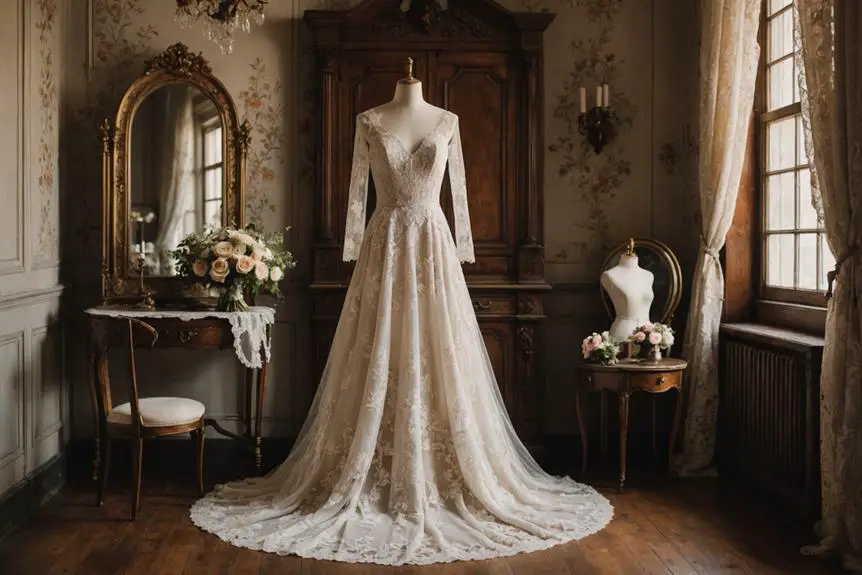
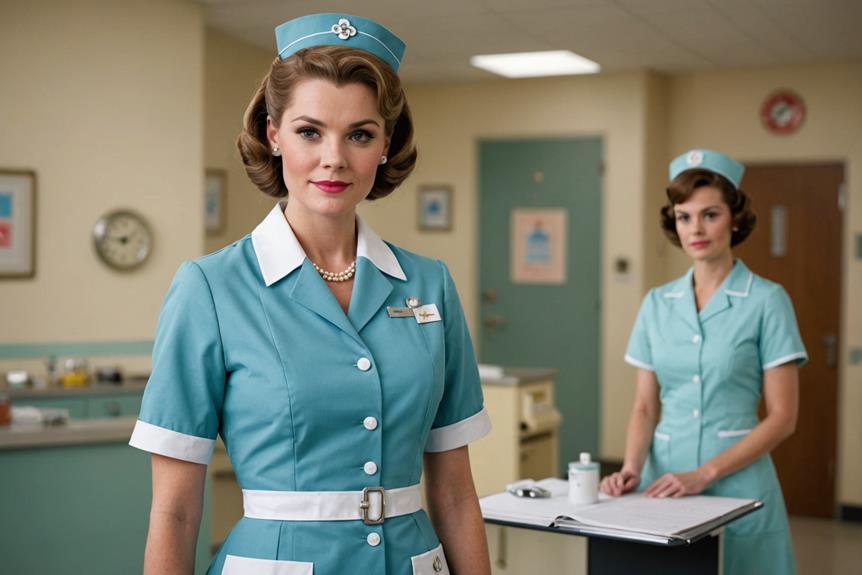
You made some decent factors there. I regarded on the internet for the difficulty and located most people will go along with together with your website.